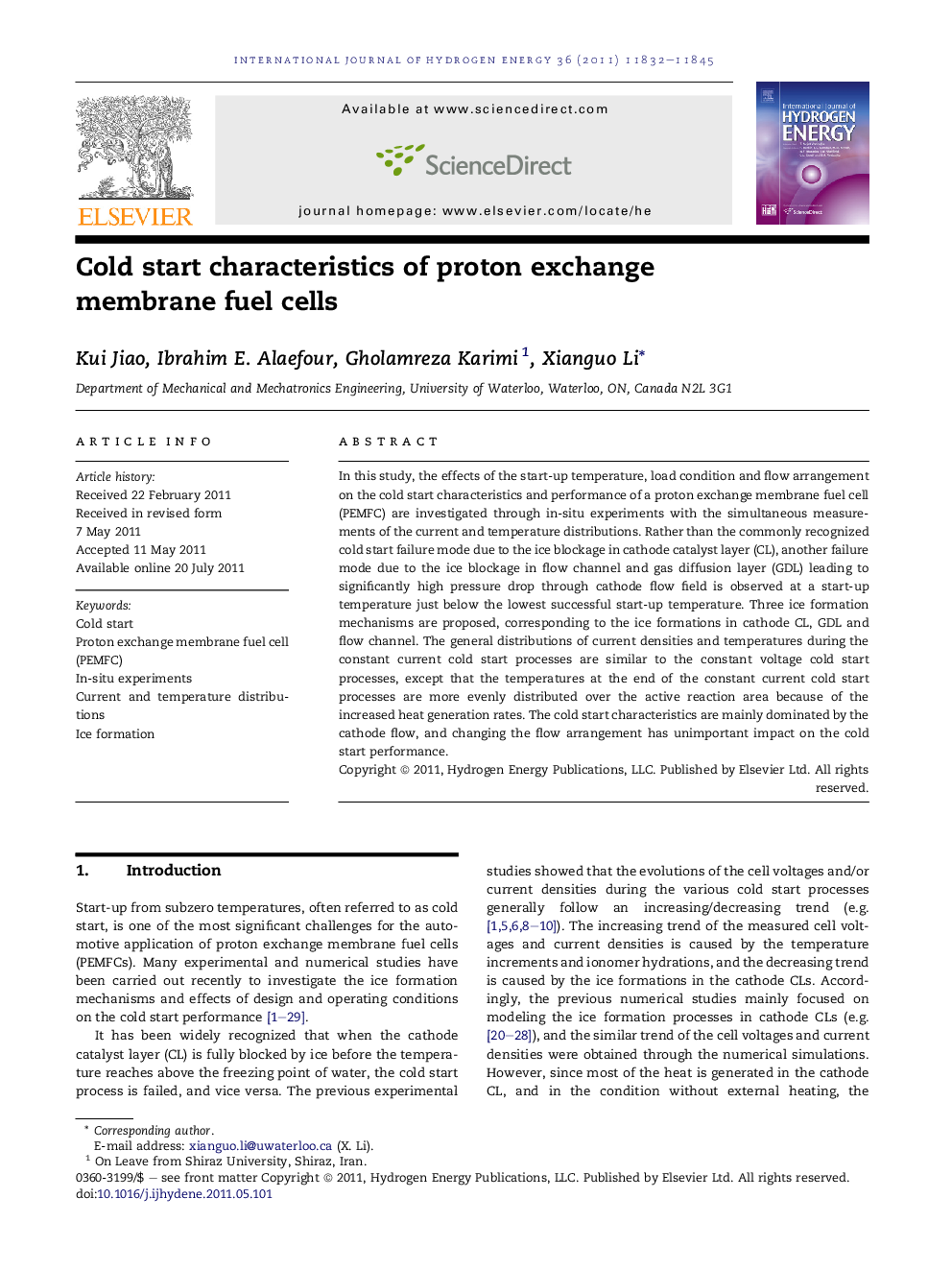| Article ID | Journal | Published Year | Pages | File Type |
|---|---|---|---|---|
| 1275876 | International Journal of Hydrogen Energy | 2011 | 14 Pages |
In this study, the effects of the start-up temperature, load condition and flow arrangement on the cold start characteristics and performance of a proton exchange membrane fuel cell (PEMFC) are investigated through in-situ experiments with the simultaneous measurements of the current and temperature distributions. Rather than the commonly recognized cold start failure mode due to the ice blockage in cathode catalyst layer (CL), another failure mode due to the ice blockage in flow channel and gas diffusion layer (GDL) leading to significantly high pressure drop through cathode flow field is observed at a start-up temperature just below the lowest successful start-up temperature. Three ice formation mechanisms are proposed, corresponding to the ice formations in cathode CL, GDL and flow channel. The general distributions of current densities and temperatures during the constant current cold start processes are similar to the constant voltage cold start processes, except that the temperatures at the end of the constant current cold start processes are more evenly distributed over the active reaction area because of the increased heat generation rates. The cold start characteristics are mainly dominated by the cathode flow, and changing the flow arrangement has unimportant impact on the cold start performance.
► Measurement of current/temperature distribution of PEMFC cold start is conducted. ► Three ice formation mechanisms in CL, GDL and flow channel are proposed. ► Current/temperature distributions are mainly dominated by cathode flow arrangement.
